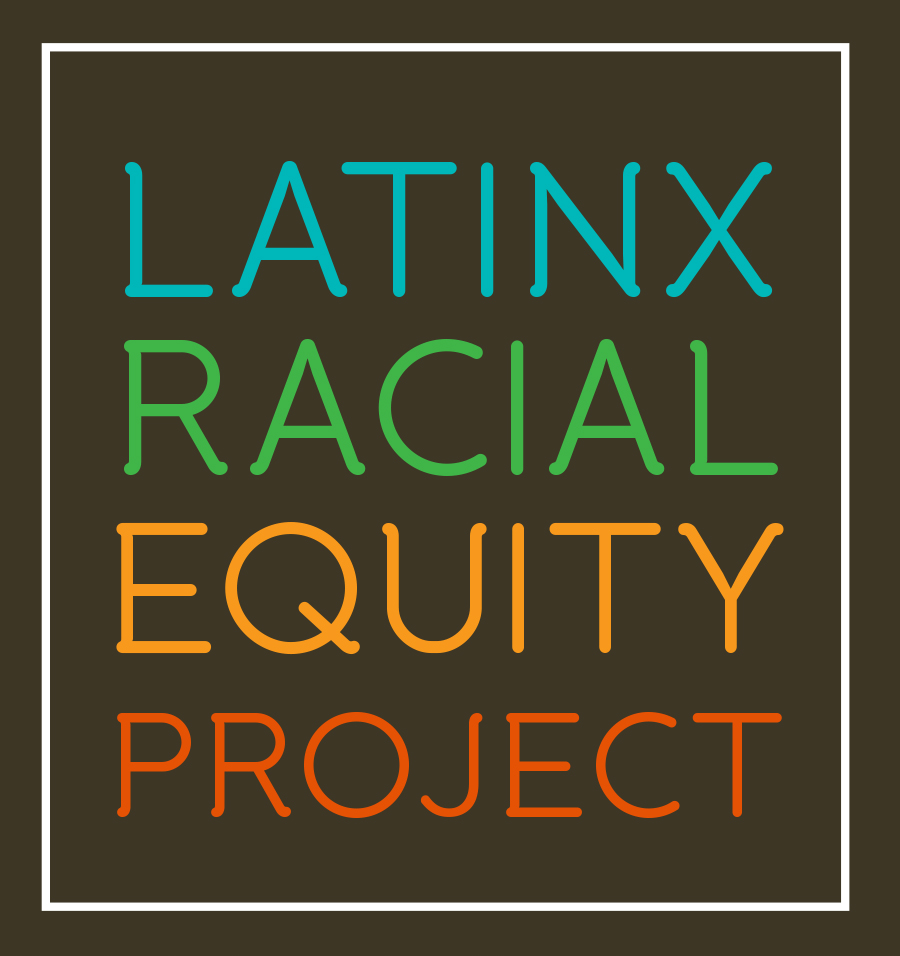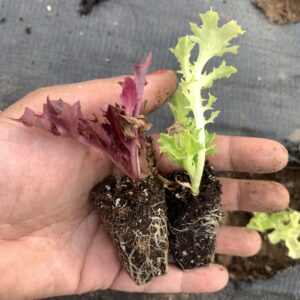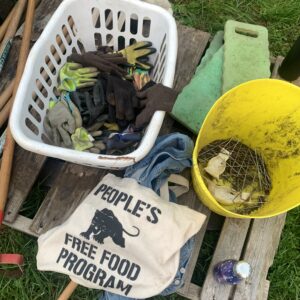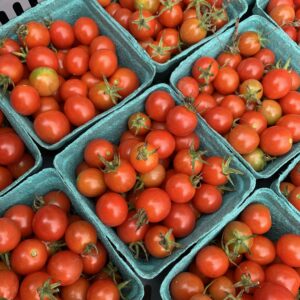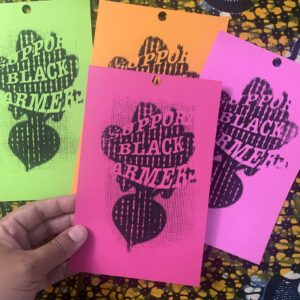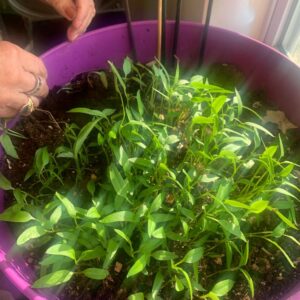by Lorena Estrella
April is celebrated as Earth Month, which is a time to raise awareness about sustainability, the environment, and climate change challenges & solutions. As we welcome the spring season, this is also a great time to reflect and focus on both personal and collective environmental commitments and sustainable practices.
Climate Justice Is Racial Justice and
- Multilingual Poster at City Green
- Lettuce plant
- Gardening supplies
- Jersey tomatoes
- Hand stamped illustration by me, “Support Black Farmers”
- Grandma’s hands & her peppers.
- Zinnias
- Mom’s pots
Racial Justice is Climate Justice.
To keep myself from diving into climate doomism, I am taking time to do something and get my hands in the dirt. That’s why this spring, I am turning to my local community garden as a way to commit to building my own healing practice. I’m excited to continue learning, healing, and growing in the garden.
Growing up in Passaic, NJ, I had some access to green spaces like local parks, but I truly don’t remember having meaningful or memorable experiences with nature or the outdoors. I thought of the outdoors as a wild place and something for white people to explore and enjoy; something that wasn’t for people who looked like me.
As I have gotten older, I am more aware of how white supremacy works to disconnect our minds, bodies & spirits from ourselves and our natural world. This separation has been used as a tool to exploit the land and oppress BIPOC people. I am now in the process of interrupting this separation and seeking integration and a better relationship with nature, not against it.
The pandemic opened up the world of gardening for me when I started volunteering at a local community farm. It was a safe way to get outside, meet new people, and explore a long-standing interest in growing food and getting my hands into the dirt. I got to learn lots of new things and experience many firsts – seeing cucumbers grow on a vine, and tasting the best cherry tomatoes of my life! digging up carrots, and finding colorful caterpillars (shoutout to Picture This app). These seemingly basic plant things truly blew my mind. I would leave the farm with pockets full of tomatoes, peppers, and tiny little flowers I would collect. I would feel buoyant and filled with the joy of experiencing nature in a new way. This way was intimate and personal. Every week was a new little surprise, a delight in the possibility of a seed.
I have also come to realize I have taken for granted the women gardeners in my immediate life. Both my mother and grandmother have and continue to grow things in their homes. What I saw as them being “scrappy” was actually them being sustainable and intentional. My grandma still makes her own compost for her window and container plants using leftover coffee grinds, fruit peels, and eggshells. She propagates plants from snippets of gifted or foraged plants and uses left-over veggies to start new plants. My mother is notorious for finding creative containers to plant flowers in like old pots, baskets, cans, tires, you name it. Soon enough the pile of dirt would transform into a lush environment.
This got me thinking about all the ways that Black & Indigenous folks have used gardening and farming to reclaim space, re/connect to the land, and resist dominant systems of oppression. Growing your own food is power. Growing flowers and plants is beauty and power. Getting your hands in the soil is power. Especially in the face of forced displacement and removal from ancestral lands, the act of seeding and growing something is powerful and beautiful, especially when done with others in community.
We already have access to such rich knowledge about gardening and land that is our own. That is coded in our cells, that is carried inside of us. For me, the garden has been a place to reflect, and talk to myself and the soil. A place to still my mind, to let go of worries, to experiment and to hope, and ultimately to be present with what is; be present with who I am at this moment and to believe in my blooming. I am grateful for this renewed access and reconnection in my life.
I am deeply inspired by the wisdom of Black & Indigenous land stewards, past and present – from the ones right in our own families to our neighborhoods to the farmers around the globe – who have always innovated and cultivated a right relationship to land, I am learning many lessons and share the three below that I am coming back to over and over again in my journey.
- Mutuality through The Three Sisters – The indigenous wisdom of The Three Sisters represented by corn, beans, and squash is a farming technology that creates a mutually beneficial growing relationship for all three plants. Also known as “companion planting”, the three sisters represent a sustainable and nutritious way of planting and feeding communities to this day.
- Use what you got. “El que tiene un ahí es rico” | “If you have a pepper, you are rich” – Sprouting seeds from the foods we eat on an everyday basis is a sustainable way to grow food right in our kitchens! My grandma is so good at this. Right now her window sill is filled with containers of pepper, garlic, and even tomatoes.
- Support Black and Indigenous farmers right now! Check out City Green (Clifton, NJ), Greater Newark Conservancy (Newark, NJ), Soul Fire Farm (Rensselaer County, NY), El Sereno Community Garden (Los Angeles, CA), and Sankofa Community Farm (Philadelphia, PA).
